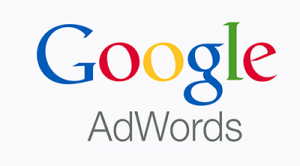 My husband works for the federal government, and from what I can gather, he and his colleagues communicate using 85% acronyms and 15% actual words. This facilitates efficient communication AND makes them all feel like they’re part of a super-secret cool-kid club. Bonus.
My husband works for the federal government, and from what I can gather, he and his colleagues communicate using 85% acronyms and 15% actual words. This facilitates efficient communication AND makes them all feel like they’re part of a super-secret cool-kid club. Bonus.
However, when he’s talking to a member of the public, he doesn’t prattle on about HZEC-12 Forms and 6T Exceptions.* He uses the full names of practices, forms, and policies when needed, and just explains the purposes of these tools when the full name feels irrelevant. This, too, facilitates efficient communication. It also ensures that the people he helps don’t feel talked-down to, confused, or overwhelmed.
Acronyms are great when you’re communicating with other insiders, but they’re often less useful when you’re interfacing with customers or the public, as you’re often doing through your newsletter. Industry jargon, marketing buzzwords, and slang are also risky bets to sprinkle in amongst your plain speech. Here are some reasons to proceed with caution when using specialized language in email newsletters.
How (And When) To Use Specialized Language In Email Newsletters
Industry Jargon
If you send out a newsletter about advancements in laboratory safety that is primarily read by chemists, science teachers, and lab techs, by all means talk about coags, T-max, and dips. If you send out a newsletter about safe lab practices that’s mostly read by first-year medical students, you might want to dial it back. It’s true that jargon can illustrate how in-the-know you are, but it can also alienate and confuse your readers. Know your audience, and use jargon only when you’re certain they’ll understand it.
Acronyms
You may be thinking, “Won’t the same guidelines that apply to jargon apply to acronyms?” And the answer is generally, yes. But with acronyms you have the ability to introduce and explain: In the newsletter you use to promote your social media consulting business, you can write, “I can help you maximize your website’s search engine optimization (SEO) …” and then use the acronym in any text that follows. Only do this if you’re going to be talking extensively about the acronym’ed topic, or when using an acronym that readers may have seen many times and wondered about.
Marketing buzzwords
I’ll level with ya: Unless you’re writing to an audience of marketing professionals, there’s really no reason to lean on buzzwords. Talking about “storyscaping,” “growth hacking,” and “pain points” won’t impress readers, even if it’s marketing services you’re trying to sell them. Stick to layperson language and explain concepts succinctly instead of taking buzzword shortcuts.
Slang
It’s true that you’ve got a little more leeway with slang: Making a joke about selfies or being on fleek can help you seem socially aware and clued-in. Slang in enduring prose like novels and memoirs will eventually make the writing seem dated, but newsletters are fleeting and this risk is much lower. However! Make sure you’re using slang terms that you’re truly and personally familiar with and focus on the ones that are in current and widespread use: You don’t want to make yourself look foolish by using a term incorrectly, nor do you want to make your audience feel out-of-touch.
When in doubt, go with straight-up, comprehensible layperson language in your email newsletters. But if you’re mixing in any speciality terms or abbreviations, just make sure you know your audience will understand and appreciate them.
*Mainly because these are things that I just made up. I’M not part of the super-secret cool-kid club, remember?
Photo Credit: Sharon Drummond via Compfight cc
(179)
Report Post







